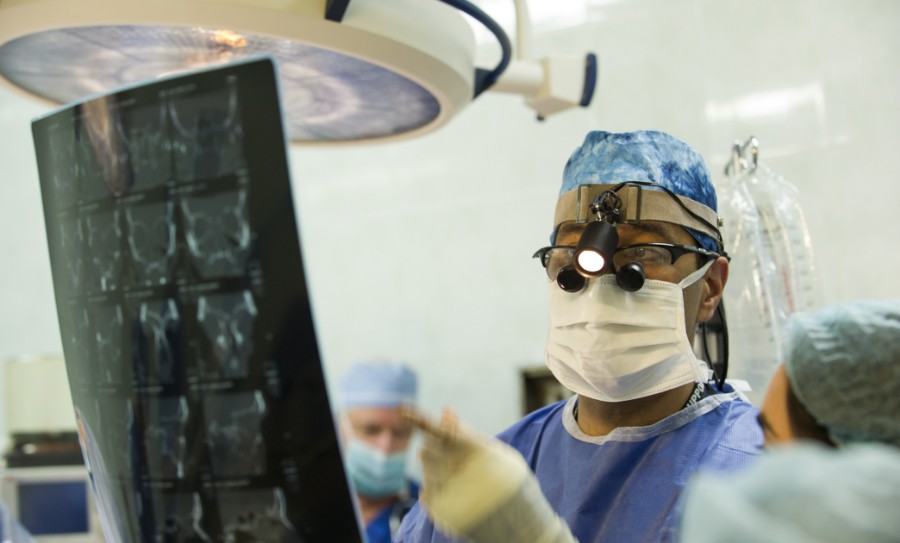
Find a Sinus Specialist Near You in New York, New Jersey, and Pennsylvania
At ENT & Allergy Associates, we provide expert, multidisciplinary care for adults and children experiencing nasal and sinus disorders. Whether you’re dealing with chronic sinusitis, nasal polyps, or need skull base surgery, our team of ENT specialists and fellowship-trained sinus surgeons delivers personalized care using advanced, minimally invasive techniques.
Our practice is staffed by leading ear, nose, and throat doctors, many of whom have additional expertise through fellowship training or have devoted their careers to treating complex sinus and nasal conditions.
We also work closely with our in-house allergy and immunology specialists, ensuring that both structural and allergy-related nasal problems are treated with an integrated approach.
Common Nasal & Sinus Conditions We Treat
We provide expert diagnosis and treatment for a wide range of sinus and nasal conditions, including:
- Acute and chronic sinusitis
- Nasal polyps
- Septal deformities and nasal obstruction
- Recurrent sinus infections in children
- Allergy-related nasal congestion and postnasal drip
- Skull base tumors and sinus neoplasms
- Sinus complications after prior unsuccessful surgeries
What are the Symptoms of Sinusitis?
If you experience any of the following symptoms, you may benefit from evaluation by a sinus specialist:
- Facial pain or pressure
- Head congestion or sinus headaches
- Thick, discolored nasal drainage
- Loss of smell or taste
- Postnasal drip Fatigue lasting over 12 weeks
- Chronic cough or throat clearing
Sinusitis Treatment Options
Many sinus infections improve on their own, but persistent or severe cases require medical care. Our treatments include:
- Saline rinses and nasal sprays
- Antihistamines and decongestants
- Prescription medications
- Image-guided endoscopic sinus surgery
- Balloon sinuplasty
- Revision sinus surgery
- Coordinated allergy treatment
Our board certified and fellowship specialists’ tailors your treatment plan using a comprehensive, patient-centered approach to ensure lasting relief and improved quality of life.
Why Choose ENT & Allergy Associates?
- Over 60 locations across New York, New Jersey, and Pennsylvania
- Board-certified and Fellowship trained ENT doctors with advanced sinus expertise
- Pediatric ENT care available at all locations
- On-site allergy testing and treatment
- Minimally invasive surgical options
- Seamless coordination between ENT, allergy, and audiology teams
Locations We Serve Across New York, New Jersey and Pennsylvania!
With offices in key cities throughout New Jersey, New York, and Pennsylvania, ENT & Allergy Associates provides easy access to specialized care for patients in the following areas:
- New Jersey:Bergen County, Camden County, Burlington County, Monmouth County, Middlesex County, Morris County, Passaic County, Sussex County, Somerset County, and more.
- New York: Bronx, Brooklyn, Manhattan, Staten Island, Queens, Long Island (Nassau and Suffolk Counties), and Westchester County.
- Pennsylvania: Bucks County, Montgomery County, and Philadelphia County.
Find a convenient ENT & Allergy Associates office near you using our location search tool or call to schedule an appointment with one of our sinus specialists.
Frequently Asked Questions
Q: Do you treat children with sinus conditions?
A: Yes! Our pediatric ENT specialists provide care for children with chronic sinusitis, nasal allergies, and airway obstruction.
Q: What if my previous sinus surgery didn’t work?
A: We specialize in complex and revision sinus surgery. Our fellowship-trained surgeons use advanced imaging and surgical navigation for better outcomes.
Q: Can allergies cause sinus problems?
A: Absolutely. Untreated allergies can lead to nasal inflammation, congestion, and chronic sinusitis. Our allergy specialists work closely with our ENT physicians to manage both.
Q: Where can I find a sinus specialist near me?
A: ENT & Allergy Associates has offices throughout Manhattan, Brooklyn, Queens, Long Island, Westchester, Northern New Jersey, Central and South Jersey, and Eastern Pennsylvania.

Patient Stories
-
"Dr Gottlieb and staff are amazing. You guys have reduced wait times via phone texts and checking in before coming to office from parking lot. Super convenient!!!! Thank you"
- Sunny. A -
"The staff and the doctor were friendly, courteous, professional and thorough. They were unhurried, yet efficient. I left feeling cared for and satisfied."
- Antonia E. -
"All the staff is friendly and attentive. They don't waste time. And they will answer all your questions."
- Curtis J.
Less Sick Days, More Living

Read More about Sinus & Skull Base
-
Sinus Rinses Are a Go-to Remedy When You’re Stuffed Up—but Are They Safe? Here’s What Primary Care Physicians Say
If you want to give it a try, be sure to avoid these common mistakes. By EMILY LAURENCE - DEC 28, 2022 Are Sinus Rinses ...
-
Sinus Infection Causes, Symptoms & Treatment
The sinuses are air filled spaces in the bones that make up our skull that our connected to our nasal passages. They ...
-
Improving Your Breathing and Life by Improving Your Nasal Airways
Nasal congestion, also referred to as nasal stuffiness, fullness, or obstruction, is a very common symptom and can cause ...
